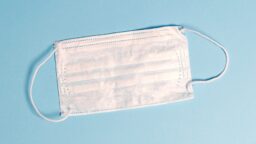The University of Washington (UW) is looking to crowdsource a cure to stop the spread of COVID-19, the highly contagious strain of coronavirus sweeping throughout the world.
By way of a new online puzzle game, the university is calling on professional and citizen scientists to design a protein that could block the virus from interacting with human cells and stop the infection altogether.
The game is available on Foldit, a website created over a decade ago by the UW Center for Game Science in collaboration with the UW Department of Biochemistry.
Foldit, which has gained more than 200,000 players since it first started, has a decorated history of enabling citizen scientists to solve some of the world’s most pressing scientific questions. In 2011, for example, Foldit players modeled the crystal structure of a retroviral protease from Mason-Pfizer monkey virus, which is known to cause HIV/AIDS-like symptoms. It was a scientific problem that hadn’t been solved for 15 years.
In this particular COVID-19 challenge, the most promising solutions will be manufactured and tested at the UW Institute of Protein Design, according to a recent Foldit Twitter post.
COVID-19 was first detected in December 2019 in Wuhan, China. Since then, it has already infected nearly 90,000 individuals and killed more than 3,000 throughout the world. Six Americans have died at this point, all of whom were residents of Washington State.
Technically, coronavirus is a family of viruses, which also includes the common cold and SARS.
All coronaviruses have a “spike” protein on their surface, according to the puzzle description. And once the coronavirus spike connects to the receptor proteins on human cells, the virus can infect the human cell and spread.
Luckily, over the past few weeks, researchers have discovered the structure of the COVID-19 spike protein and how it binds to human receptors, the puzzle description explains.
“If we can design a protein that binds to this coronavirus spike protein, it could be used to block the interaction with human cells and halt infection!,” the creators explained in the puzzle description.
This UW puzzle isn’t the only crowdsourcing competition out there seeking to combat the spread of COVID-19. Sage Health just ran a two-week-long competition that challenged teams of volunteers to use artificial intelligence technology to find a potential treatment for COVID-19.
And in an effort to better educate health professionals and the general public, experts from the London School of Hygiene & Tropical Medicine (LSHTM) recently launched a free online coronavirus course. The course, which is available through the online facilitator FutureLearn, offers the latest information on COVID-19 and includes details on how it spreads, how infectious it is, how people should be screened and quarantined, and what its implications are for the future, among other things.
At this point, health professionals know the common symptoms of COVID-19 include fever, cough and difficulty breathing.
According to the World Health Organization (WHO), the best way to protect yourself and others is to wash your hands frequently, maintain a “social distance” of about 3-9 feet between anyone who is coughing or sneezing, avoid touching your eyes, nose, and mouth, cover your nose and mouth with bent elbow or tissue when coughing or sneezing (and dispose of the tissue afterwards), and seek medical care early on if you notice any of the symptoms.
Typically, COVID-19 is killing less than 5 percent of its victims, although numbers vary and it is still early to tell.
Like with most viruses, people with underlying health issues or compromised immune systems are most susceptible to contracting and ultimately dying from COVID-19.



